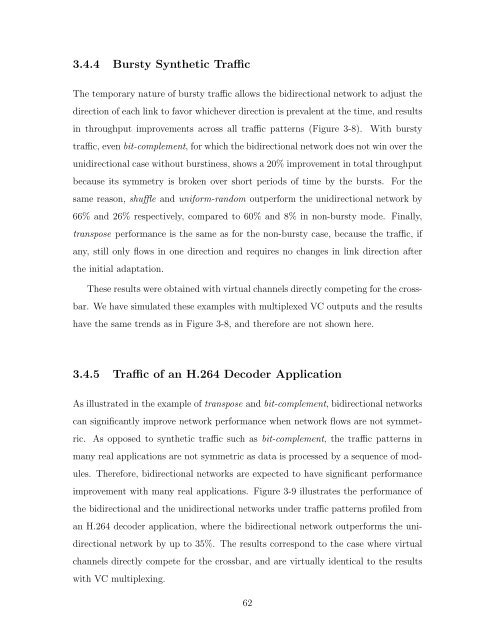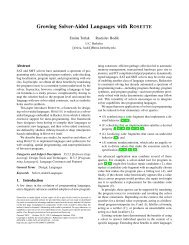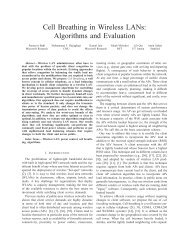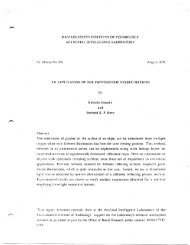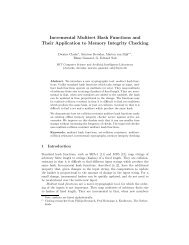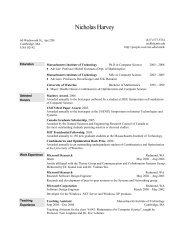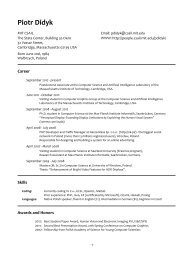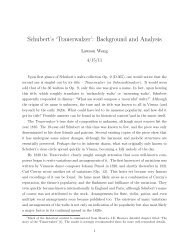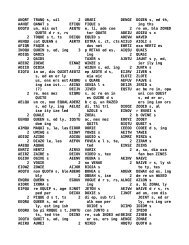On-chip Networks for Manycore Architecture Myong ... - People - MIT
On-chip Networks for Manycore Architecture Myong ... - People - MIT
On-chip Networks for Manycore Architecture Myong ... - People - MIT
Create successful ePaper yourself
Turn your PDF publications into a flip-book with our unique Google optimized e-Paper software.
3.4.4 Bursty Synthetic Tra c<br />
The temporary nature of bursty tra c allows the bidirectional network to adjust the<br />
direction of each link to favor whichever direction is prevalent at the time, and results<br />
in throughput improvements across all tra c patterns (Figure 3-8). With bursty<br />
tra c, even bit-complement, <strong>for</strong> which the bidirectional network does not win over the<br />
unidirectional case without burstiness, shows a 20% improvement in total throughput<br />
because its symmetry is broken over short periods of time by the bursts. For the<br />
same reason, shu✏e and uni<strong>for</strong>m-random outper<strong>for</strong>m the unidirectional network by<br />
66% and 26% respectively, compared to 60% and 8% in non-bursty mode. Finally,<br />
transpose per<strong>for</strong>mance is the same as <strong>for</strong> the non-bursty case, because the tra c, if<br />
any, still only flows in one direction and requires no changes in link direction after<br />
the initial adaptation.<br />
These results were obtained with virtual channels directly competing <strong>for</strong> the crossbar.<br />
We have simulated these examples with multiplexed VC outputs and the results<br />
have the same trends as in Figure 3-8, and there<strong>for</strong>e are not shown here.<br />
3.4.5 Tra c of an H.264 Decoder Application<br />
As illustrated in the example of transpose and bit-complement, bidirectional networks<br />
can significantly improve network per<strong>for</strong>mance when network flows are not symmetric.<br />
As opposed to synthetic tra c such as bit-complement, the tra c patterns in<br />
many real applications are not symmetric as data is processed by a sequence of modules.<br />
There<strong>for</strong>e, bidirectional networks are expected to have significant per<strong>for</strong>mance<br />
improvement with many real applications. Figure 3-9 illustrates the per<strong>for</strong>mance of<br />
the bidirectional and the unidirectional networks under tra c patterns profiled from<br />
an H.264 decoder application, where the bidirectional network outper<strong>for</strong>ms the unidirectional<br />
network by up to 35%. The results correspond to the case where virtual<br />
channels directly compete <strong>for</strong> the crossbar, and are virtually identical to the results<br />
with VC multiplexing.<br />
62


